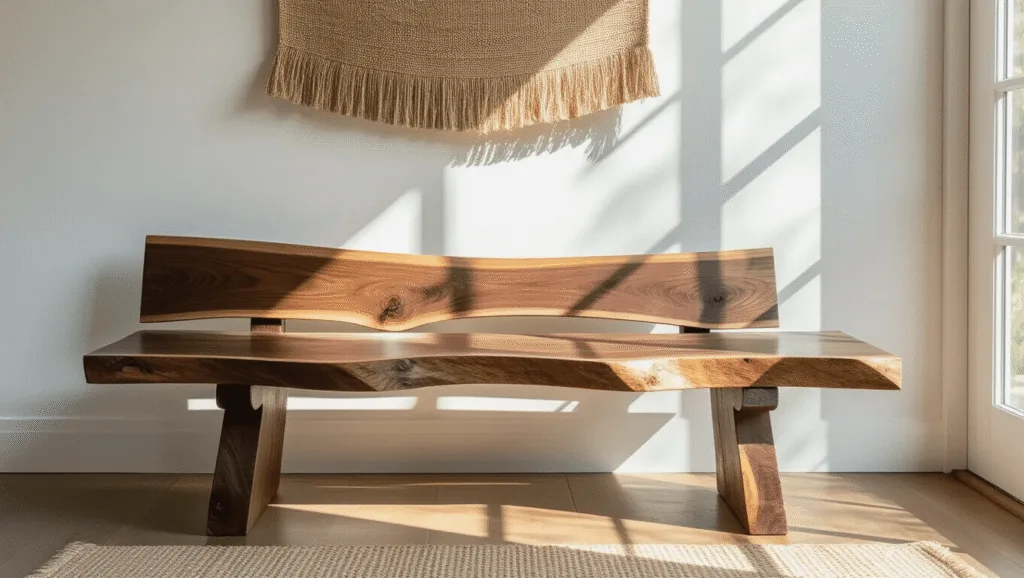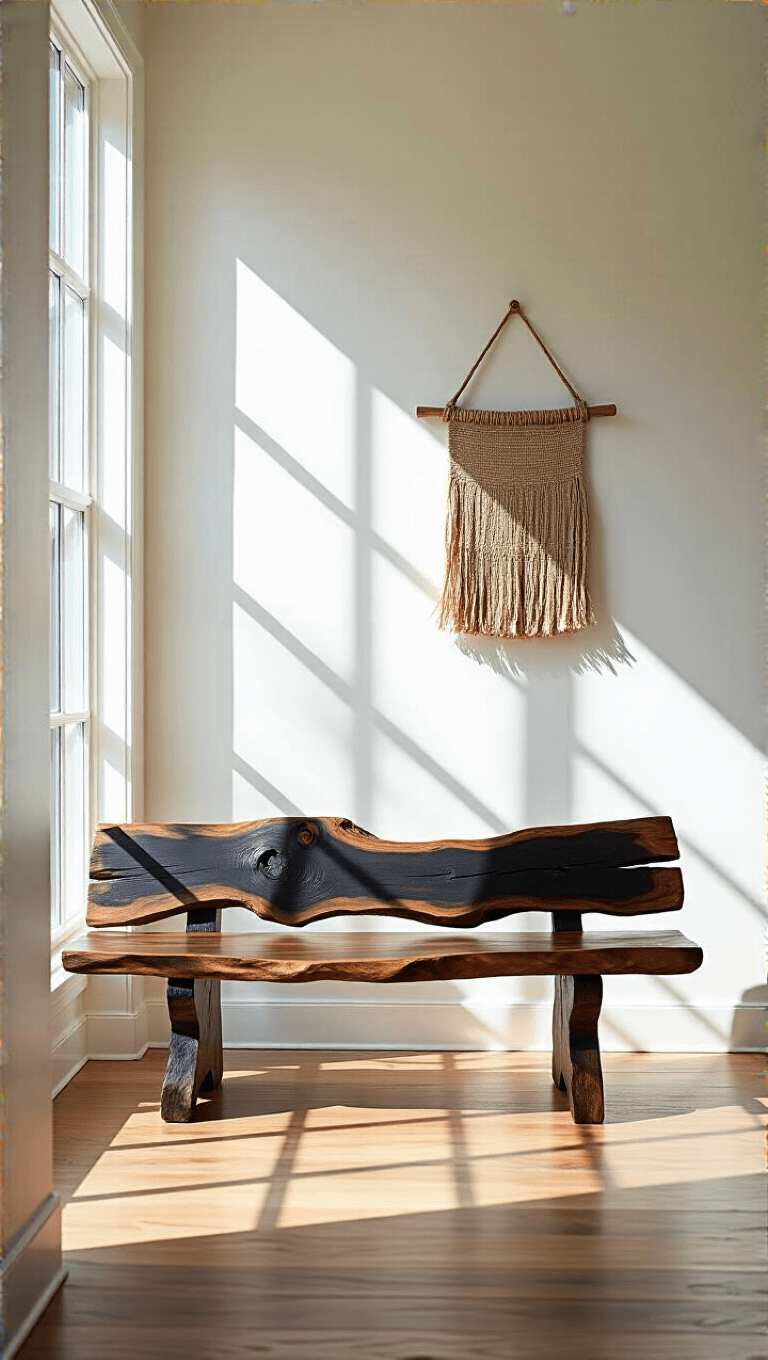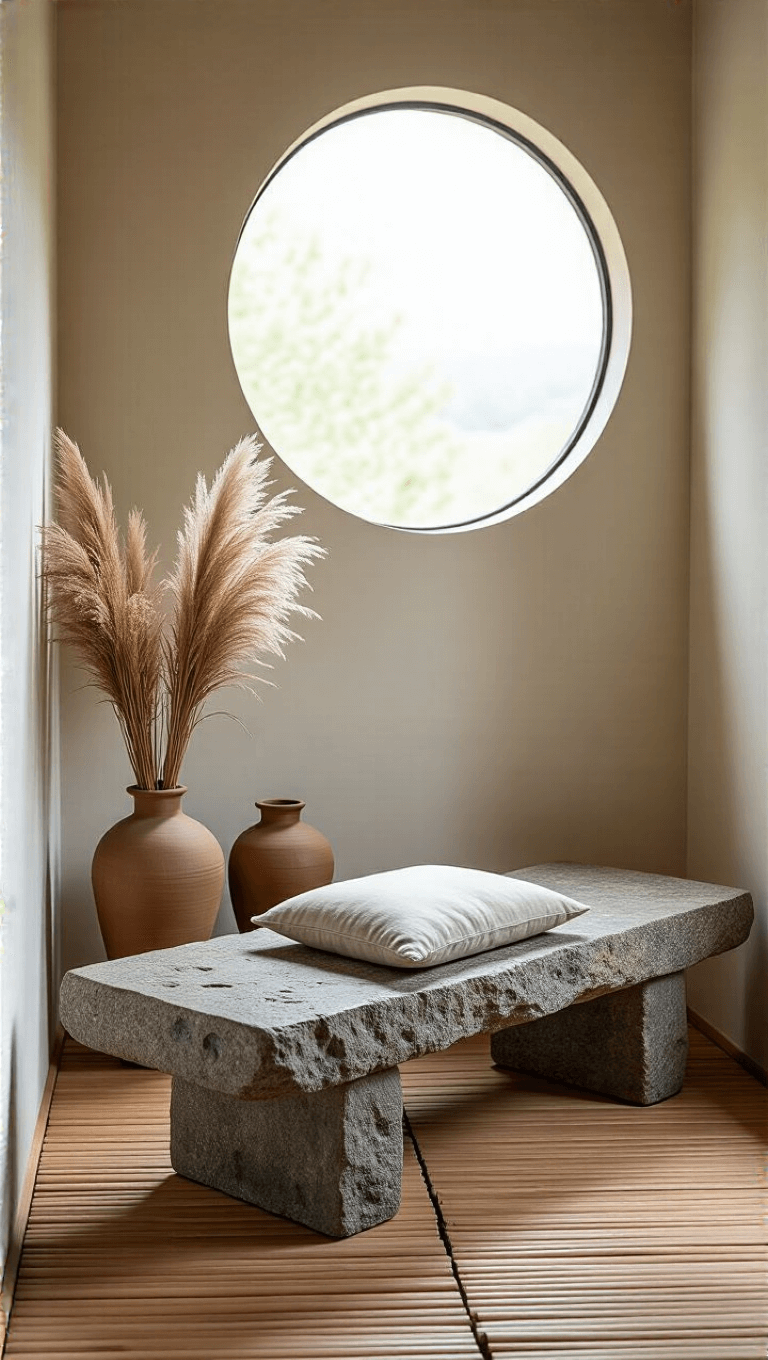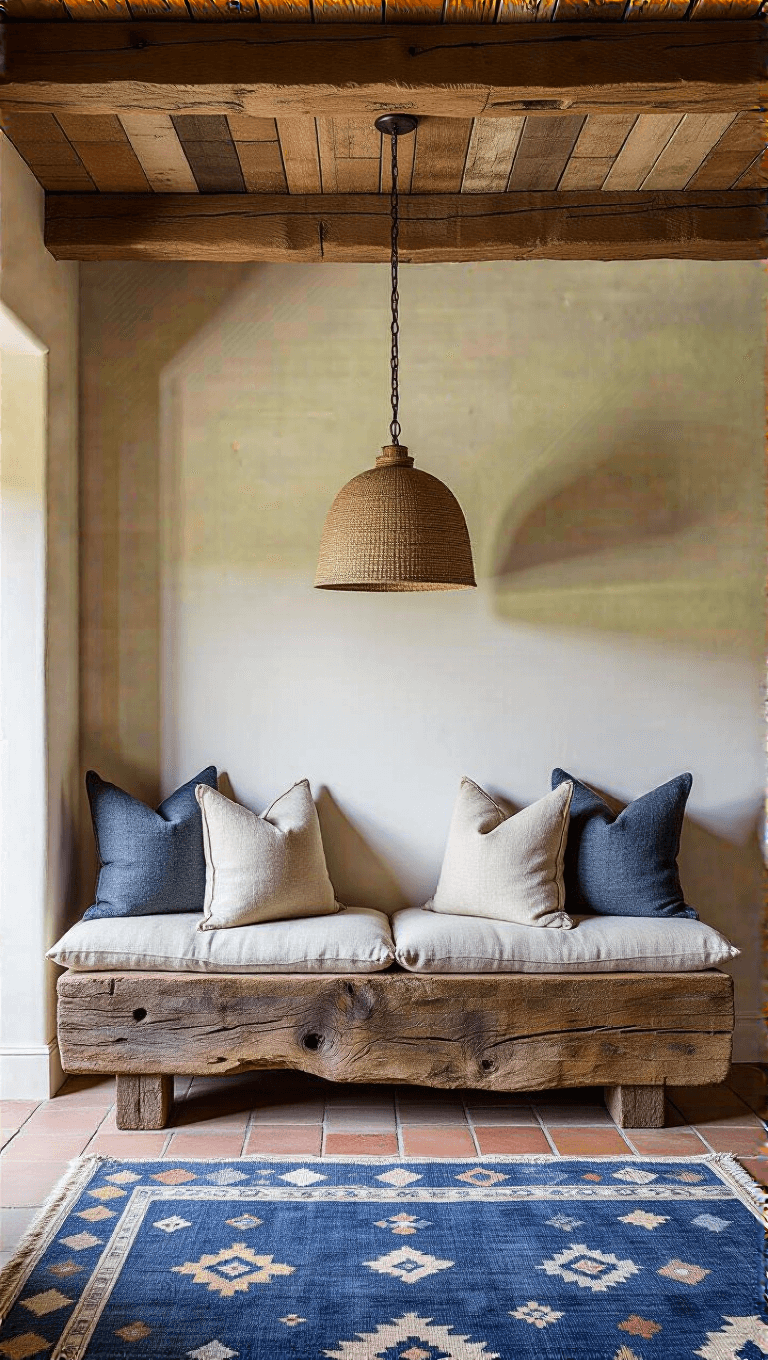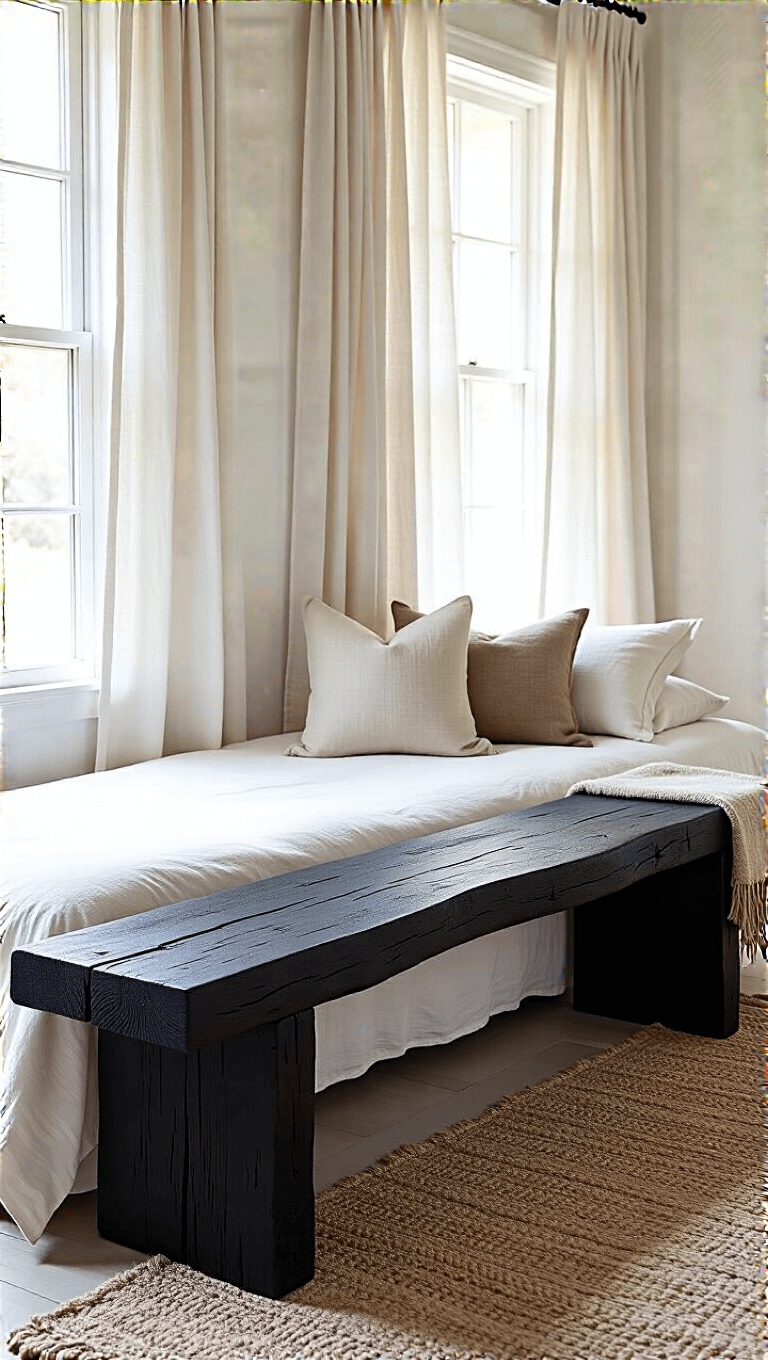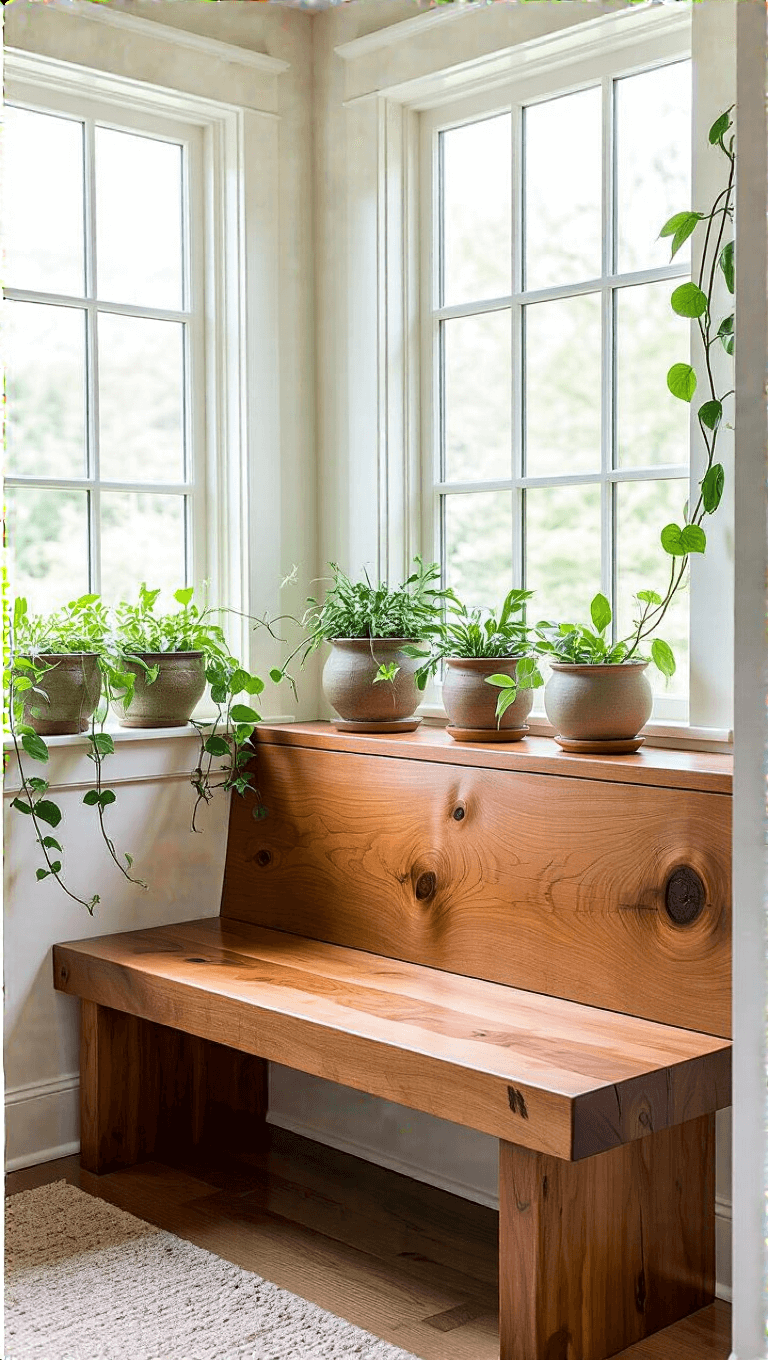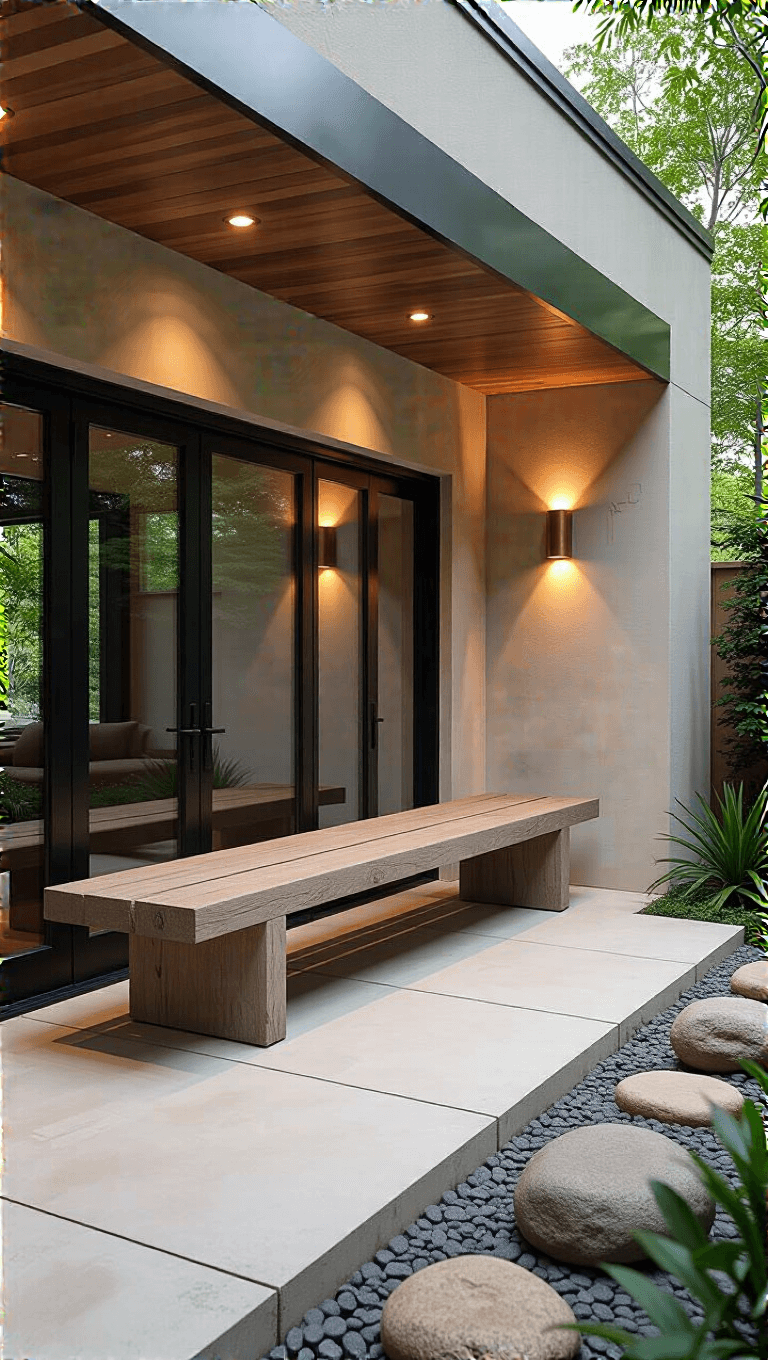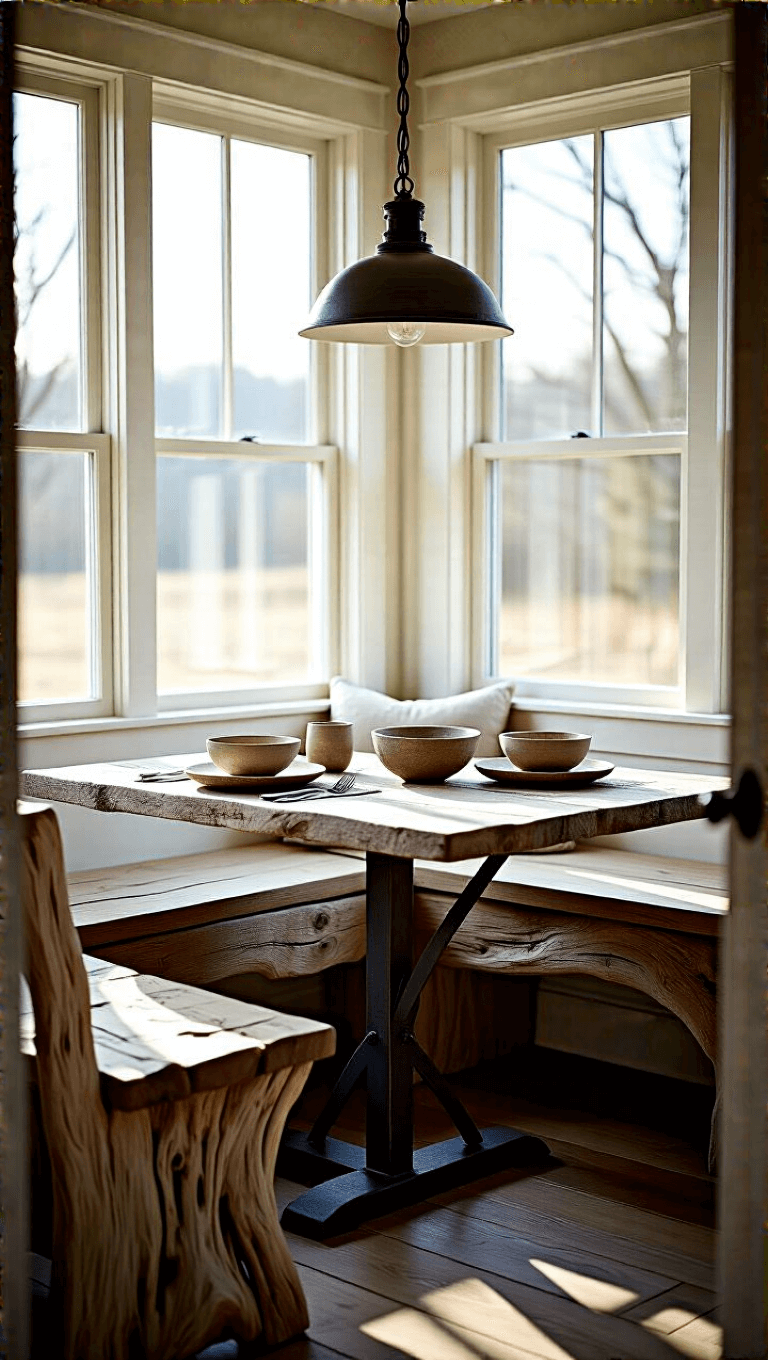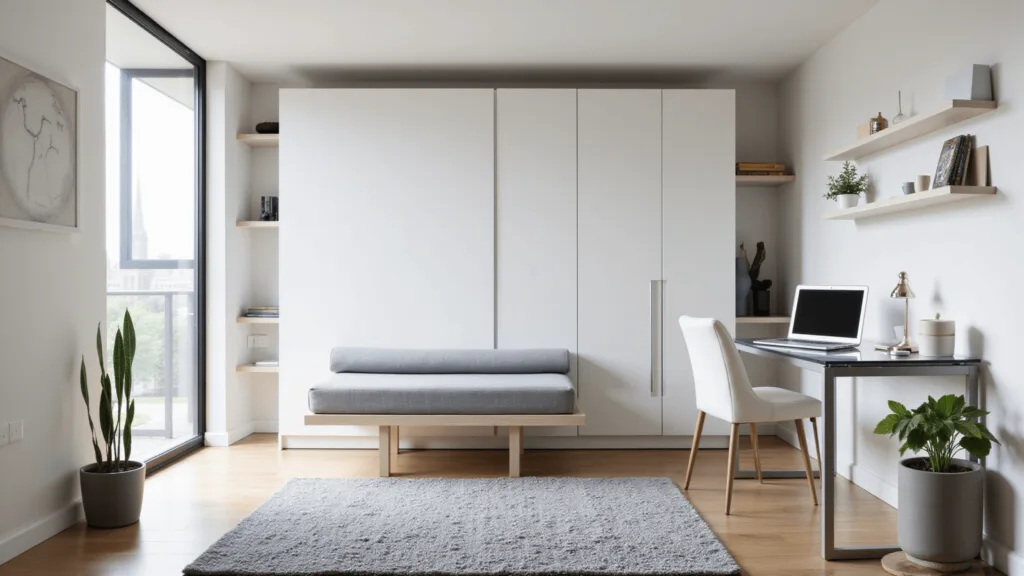What Makes a Wabi Sabi Bench Special?
I’ve always believed that true beauty isn’t about perfection, but about character. And nowhere is this more true than in wabi sabi bench design.
Key Characteristics
Materials Matter:
- Reclaimed wood with natural imperfections
- Weathered stones
- Unfinished surfaces
- Visible grain and knots
- Organic, untouched textures
Design Philosophy
Wabi sabi isn’t just a design—it’s a philosophy that celebrates:
- Impermanence
- Natural aging
- Simplicity
- Authentic craftsmanship
Stunning Wabi Sabi Bench Styles
1. Live-Edge Masterpieces
- Keeps original wood edges
- Unique, one-of-a-kind design
- Highlights natural wood character
2. Minimalist Stone Benches
- Raw, unpolished stone
- Simple geometric forms
- Emphasizes material’s inherent beauty
3. Rustic Reclaimed Wood Benches
- Made from old beams or salvaged wood
- Visible wear and history
- Subtle, understated elegance
Styling Your Wabi Sabi Bench
Placement Tips:
- Entryways
- Meditation corners
- Living room accents
- Bedroom footboards
Complementary Decor:
- Soft linen cushions
- Handmade ceramics
- Organic rugs
- Minimalist plant arrangements
DIY Wabi Sabi Bench Creation
Essential Steps:
- Source imperfect materials
- Minimal processing
- Preserve natural features
- Use light oil or wax finish
- Embrace asymmetry
Where to Find Your Perfect Bench
Shopping Destinations:
- Etsy artisan shops
- Local woodworkers
- Vintage furniture galleries
- Specialty design stores
Pro Tip: No Two Benches Are Alike
Each wabi sabi bench is a unique piece of art. Its imperfections aren’t flaws—they’re stories waiting to be discovered.
Final Thoughts
Wabi sabi benches aren’t just furniture. They’re a meditation on beauty, impermanence, and the quiet dignity of natural materials.
Remember: In a world of mass production, your wabi sabi bench is a rebellion—a celebration of authentic, unpolished beauty.

